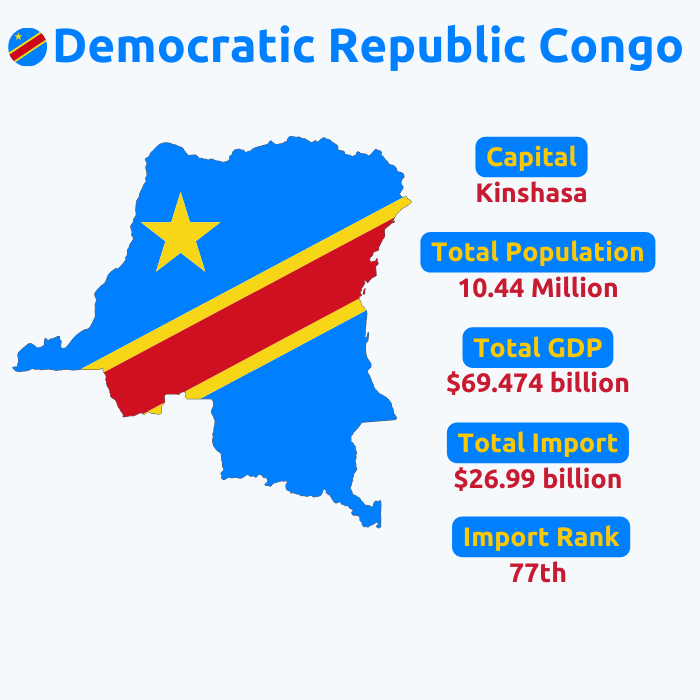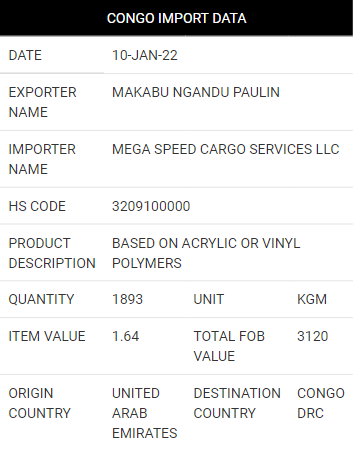Sample Data
What is Dr Congo's Import Data?
We obtain trustworthy data from organizations, shipping businesses, and customs ports. This Trade Data
contains a wide range of fields, such as HS codes, product descriptions, prices, quantities, origin country,
destination country, and port names together with currency values. For traders and marketers, this trade data is
crucial information that helps them to make informed decisions. From the HS codes and product descriptions to
the quantity and cost of each product, everything can be obtained through this trade data.
We have included a sample of this trade data for your convenience and greater understanding so
that you can see what the trade data looks like as a whole, with complete details.
Dr. Congo import data refers to the records and statistics related to the goods and products that are brought into the country from foreign nations. This data provides information about the nature of imports, their origin, quantity, value, and other relevant details. Acquiring Dr Congo's import data allows us to understand the country's trading patterns, the sectors that depend heavily on imports, and the overall economic scenario. According to DR Congo's customs data, the country's imports of goods in 2023 came to a total of $11.6 billion. Import data from the Democratic Republic of the Congo obtained from the country's customs authority is incredibly helpful and educational. All of the information in our database is derived from recently updated shipping bills, invoices, and other crucial transaction documents. We get trustworthy data from the ports, organizations, and other shipping firms in the Democratic Republic of Congo. The custom import data from the Democratic Republic of the Congo include several fields, such as product description, quantity and price, port names, and currency value. DR Congo import data is a kind of custom data that includes a wealth of information in addition to shipping details. It is derived from DR Congo trade data.
So, as you can see, we obtain trustworthy data from organizations, shipping businesses, and customs ports. The trade data contains a wide range of fields, such as HS codes, product descriptions, prices, quantities, origin country, importers/exporters names and addresses, destination country, and port names together with currency values. For traders and marketers, this trade data is crucial information that helps them make informed decisions. From the HS codes and product descriptions to the quantity and cost of each product, everything can be obtained through this trade data. We have included a sample of the trade data for your convenience and greater understanding so that you can see what the trade data looks like as a whole, with complete details.





